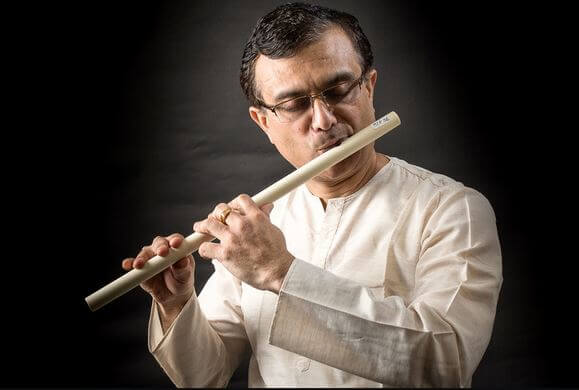18th July 2021 – Deep Ganguly
When we learn to hear the inner sounds of the body, a whole new world opens up. We all take listening/hearing for granted. We are careful with what we eat, drink, smell, or see; but when it comes to hearing, it is taken for granted, because one can shut off the eyes, touch, mouth, and nose, but not the ears! Biologically, listening is one of the first sensations formed in our body when we are in our mother’s womb, when no other senses are developed. Gradually after birth, the baby’s sensations begin to develop.
Once the senses are fully developed, the ear, or the sense of hearing, is no longer the sole guide for the man; so, it slowly retreads back. In fact, hearing loss begins to occur in humans as early as in their 20s, and the decline is faster from their 50s. These can be arrested if we do some hearing and listening exercises, and keep our precious aural senses healthy. Our ancient wisdom shows us four listening ways.
The first is listening for fun. This is to for sheer sensual happiness, by way of movies, tuning to radio, television (though it is more of seeing and less of listening), audio books, discourses, etc.
The second is listening for exploration. Here the listener is captive, when he listens to radio as he drives, walks, or engages in other works. The listening is more to escape from the monotony of the routine. That is the reason you tend to switch channels like a butterfly enjoying the ride from one flower to the other. Often, such mindless switch becomes an addiction, where the search becomes more important than the find. If continued, it could lead to serious health issues.
The third is listening to understand. Here it is listening with some clear objective, whether it is a podcast, lecture, dance drama or theater. You tend to frame questions on several aspects as you listen, sometimes to enact a conversation with others. The actual event becomes rewarding as your thoughts flow, and you speak appropriately, or listen to other conversation threads in a non-stressed manner.
Listening to Yourself – The last one is listening to yourself. This is indeed such an easy path, yet we seldom practice. Apart from greater listening powers, it acts as a spiritual discipline and brings peace and calmness to the entire being.
An important per-requisite before embarking on this discipline is to condition the mind to observe a silent day, or maun vrat. In today’s world, this is indeed a difficult one when we are surrounded by all sorts of sounds, and we tend to react with speech. As a practical way of observing maun vrat, there could be three user-friendly approaches. First is listen and not respond with answers, unless it is urgent or essential. Second is to listen and respond with body language, instead of engaging in speech such as a nod of the head, or movement of the eyes so as to non-verbally communicate. The third is to listen and slowly ruminate on the answer, and communicate the reply in the simplest and briefest manner possible.
One of the best yoga practices to listen to yourself is to practice the Bhramari or Bee Breath Yogasana. This is a wonderfully simple exercise that obliterates external sounds, and tunes you to the buzzing bee sound of your inner body. It is a great relaxer, reduces tension and anxiety, and improves sinus conditions, blood pressure and migraine. It can be done anywhere. The yogasana involves sitting in a comfortable post, with spine erect and head straight. Plug both ears with the thumb, index finger on forehead, middle two fingers on eyes, and gently apply pressure at the bottom of two nostrils with the little fingers. Keep your elbow raised to shoulder level.
Inhale and exhale deeply with the pranava mantra (Omkar), and slowly make a buzzing sound like that of a bee while keeping the mouth slightly open and tongue slightly touching the palate. Regular practitioners of this exercise will realize how the physical body is a mini generator, with so many sounds within. It shuts you off from the worldly sounds even for a few minutes, and gives you inner refuge in your self. It is a useful exercise to improve hearing abilities, and protect against hearing loss, but more importantly, it gives a taste of your spiritual potential as you are in a state of complete relaxation.
(Deep Ganguly is a Toronto-based bansuri player. He can be reached at bansibhai3@gmail.com. The article has been published with author’s permission).

